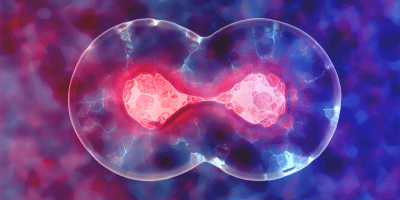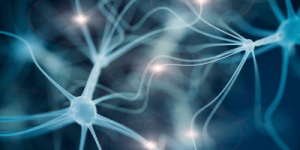A Basic Characteristic of Stem Cells is Self-Renewal and Differentiation
Stem cells hold a major place in the world of biology and are known for their unique abilities and potential applications in medical science. Another thing that sets these cells apart from other cells is that they have specific characteristics. In this detailed guide, we will study a basic characteristic of stem cells is, their types, and their significant implications for research and therapeutic development.
What is a Defining Characteristic of a Stem Cell?
To understand the characteristics of stem cells one should understand their basic nature. Undifferentiated cells called stem cells have the unique power to change into many different types of cells. This process is known as differentiation and is important for embryonic development and tissue regeneration during an organism’s life.
What the defining characteristic of a stem cell is?
Pluripotency and Differentiation Potential
A basic characteristic of stem cells is their pluripotency or multipotency. Pluripotent stem cells can differentiate into cells that are derived from the three germ layers and that are ectoderm, mesoderm, and endoderm. These include cells such as muscle cells, neurons, and epithelial cells. Multipotent stem cells, on the other hand, can change into many types of cells, such as hematopoietic stem cells, which make different types of blood cells.
Self-Renewal Capability
The defining characteristic of a stem cell is its ability to self-renew. This means that they can replicate themselves by cell division while maintaining their undifferentiated state. The self-renewal ability makes sure that a continuous supply of stem cells is ensured for ongoing maintenance and repair processes in the body.
Marker Expression and Identification
Stem cells have different molecular markers that make them different from the differentiated cells. These markers play an important role in identifying and isolating stem cell populations for research and clinical applications and these markers include surface proteins and transcription factors.
Versatility in Research and Therapeutic Applications
Stem cells are the major tool for biomedical research due to their ability to model disease mechanisms, screen potential drug candidates, and study the developmental processes. Furthermore, their regenerative potential holds the promise the treating multiple medical conditions which range from degenerative diseases to tissue injuries.
Types of Stem Cells
Embryonic Stem Cells (ESCs)
Embryonic stem cells are majorly derived from the inner cell mass of blastocysts that is the early-stage embryos. They are pluripotent and have the broadest differentiation potential among the all-stem cell types. ESCs play a major role in the study of early human development and are considered a cornerstone in regenerative medicine research.
Adult or Somatic Stem Cells
Adult stem cells are found in specific tissues within the body and they play the major role in tissue homeostasis and repair. By nature, they are multipotent and they are capable of differentiating into the cell types according to their tissue of the origin.
Induced Pluripotent Stem Cells (iPSCs)
Induced pluripotent stem cells are the reprogrammed adult cells that regain the pluripotency through genetic manipulation. iPSC technology has revolutionized the field by offering pluripotent cells via patient-specific and non-controversial sources. These cells have broad implications for disease modeling, personalized regenerative therapies, and drug discovery.
Perinatal Stem Cells
Perinatal stem cells include various stem cell populations that are derived from the tissues including umbilical cord blood, placenta, and the amniotic fluid. They have the characteristics of both embryonic and adult stem cells which makes them useful for therapeutic applications and research.
Applications and Future Directions
The research of stem cells is continuously evolving and the main aspect is to understand the fundamental biology and use their therapeutic potential. The major applications are:
- Regenerative Medicine: Regenerative medicine includes the usage of stem cells to repair or replace damaged tissues and organs.
- Disease Modeling: Creating the disease-specific stem cell models so that the pathophysiology can be studied and test the potential therapies.
- Drug Screening: Using the stem cells to identify and validate the new drug candidates with higher efficacy and safety profiles.
- Biological Research: It includes investigating the developmental processes, cellular interactions, and genetic mechanisms concerning health and disease.
Ethical Considerations and Controversies
Despite their potential, stem cell research has given rise to ethical concerns mainly concerning the use of embryonic stem cells. The main aim of the ethical guidelines and regulatory frameworks is to balance scientific progress with moral considerations and ultimately encourage the ethical use of stem cells in research and clinical practice.
Overcoming Technical Barriers in Stem Cell Research
Significant achievements have indeed been achieved in stem cell research but it still faces some technical challenges that are given below:
1. Scalability of Stem Cell Production
Challenge:
The major challenge is to produce enough quantity of stem cells for clinical applications due to the complexity of the cell culture systems.
Progress:
Due to the advances in bioreactor technology and culture media formulations, the scalability is improved and it has led to the large quantity production of stem cell populations.
Impact:
Enhanced scalability helps in broader clinical trials and the large-scale adoption of stem cell therapies.
2. Enhancing Directed Differentiation
Challenge:
It’s an important and challenging task to efficiently guide the stem cells to differentiate into specific cell types that are needed for therapeutic purposes.
Progress:
The development of differential protocols that include small molecules and growth factors ultimately improves the reliability and efficiency of the differentiation.
Impact:
Precise control over the cell fate makes sure that the production of the cell type for regenerative medicine and disease modeling applications is done.
3. Integration and Functional Maturation
Challenge:
The challenge is to make sure that transplanted cells easily integrate into the host tissues and mature into fully functional cells.
Progress:
The main focus of the research is to optimize the cell delivery methods and support the materials and environmental indications to promote integration and maturation.
Impact:
The efficacy and the long-term benefits of stem cell therapies can be enhanced by the successful integration and maturation.
Transform Your Wellness Journey with Imuregen’s Stem Cell Technology
Imuregen products will show you the way to wellness and contentment in the future. Imuregen uses the latest advancements in stem cell science to come up with new ways to improve health in all areas. Our range includes sophisticated vitamins and nutrient products made to help cells renew and stay healthy. Imuregen products are made to meet your needs, whether you want to improve your general health or learn more about how regenerative medicine can help you. Visit Imuregen’s online store right now to shop our life-changing products and start your path to better health and energy.
Conclusion
The most asked question is “What is a defining characteristic of a stem cell”? To conclude, the defining characteristic of a stem cell is its unique ability to renew the cells on its own and differentiate into specialized cell types. Stem cells have the future potential for research related to the understanding of biology, developing new treatments for diseases and ultimately improving human health. As research continues to evolve, the potential of stem cells can change medicine and can be a new hope for patients around the globe.



